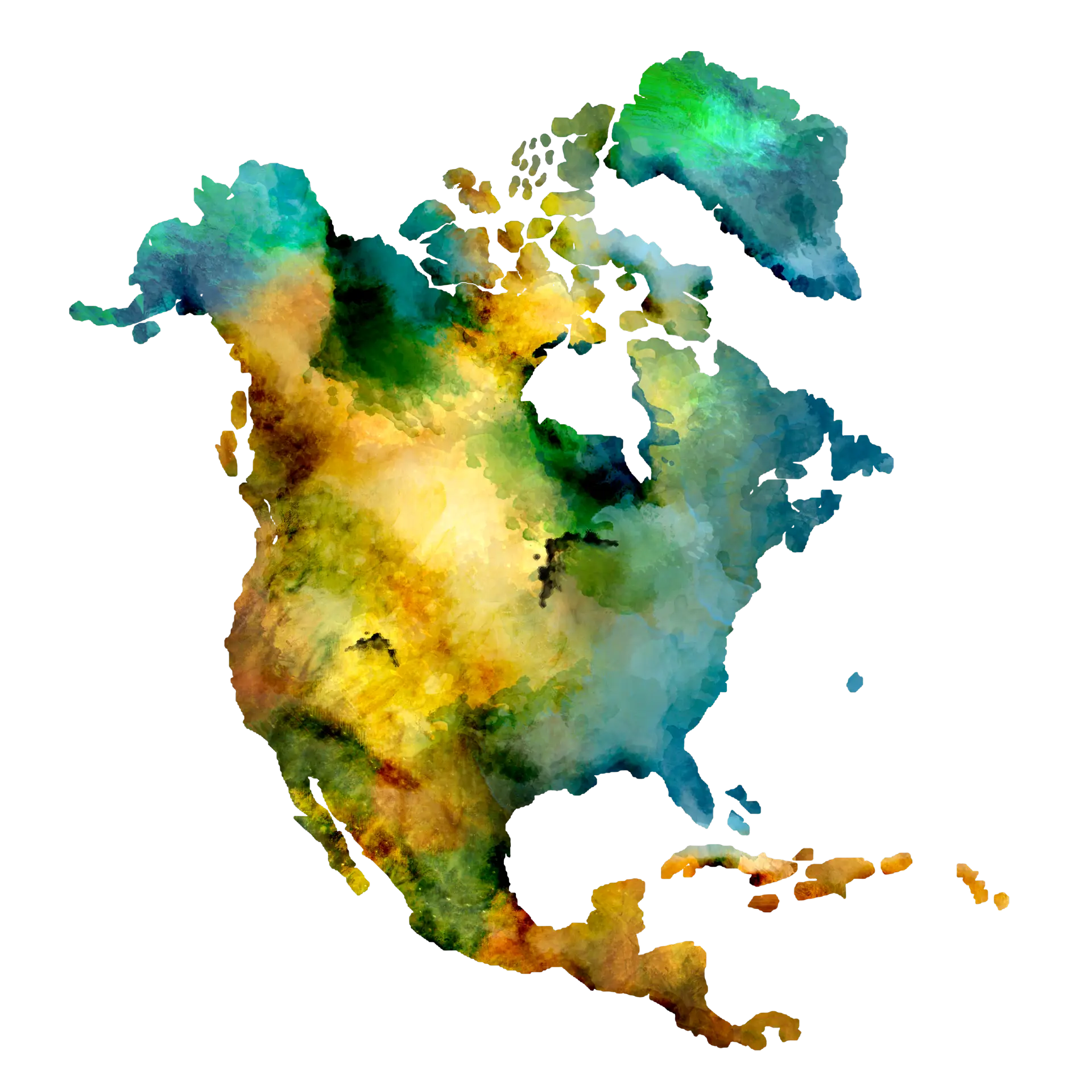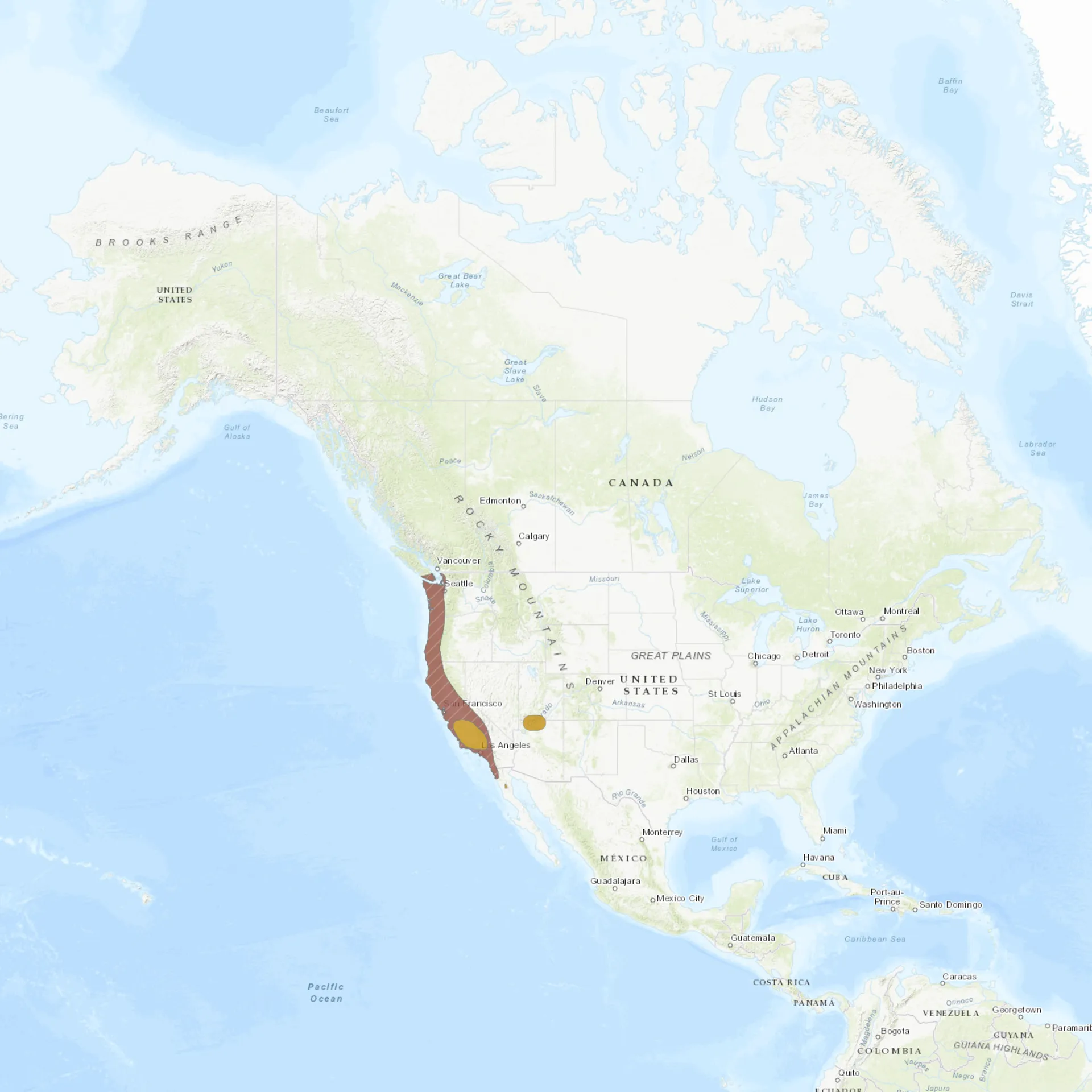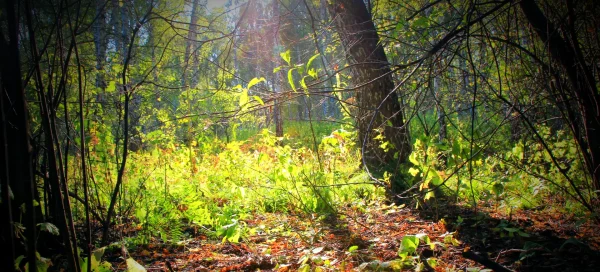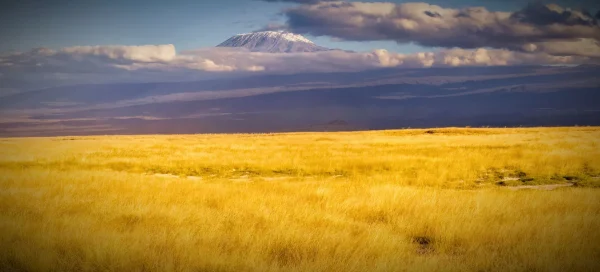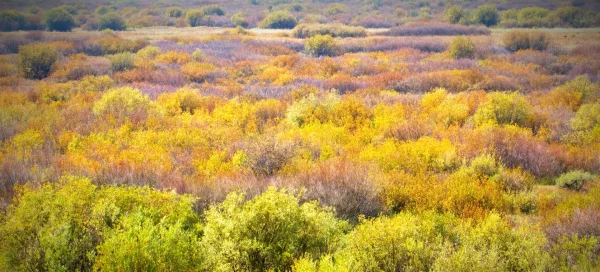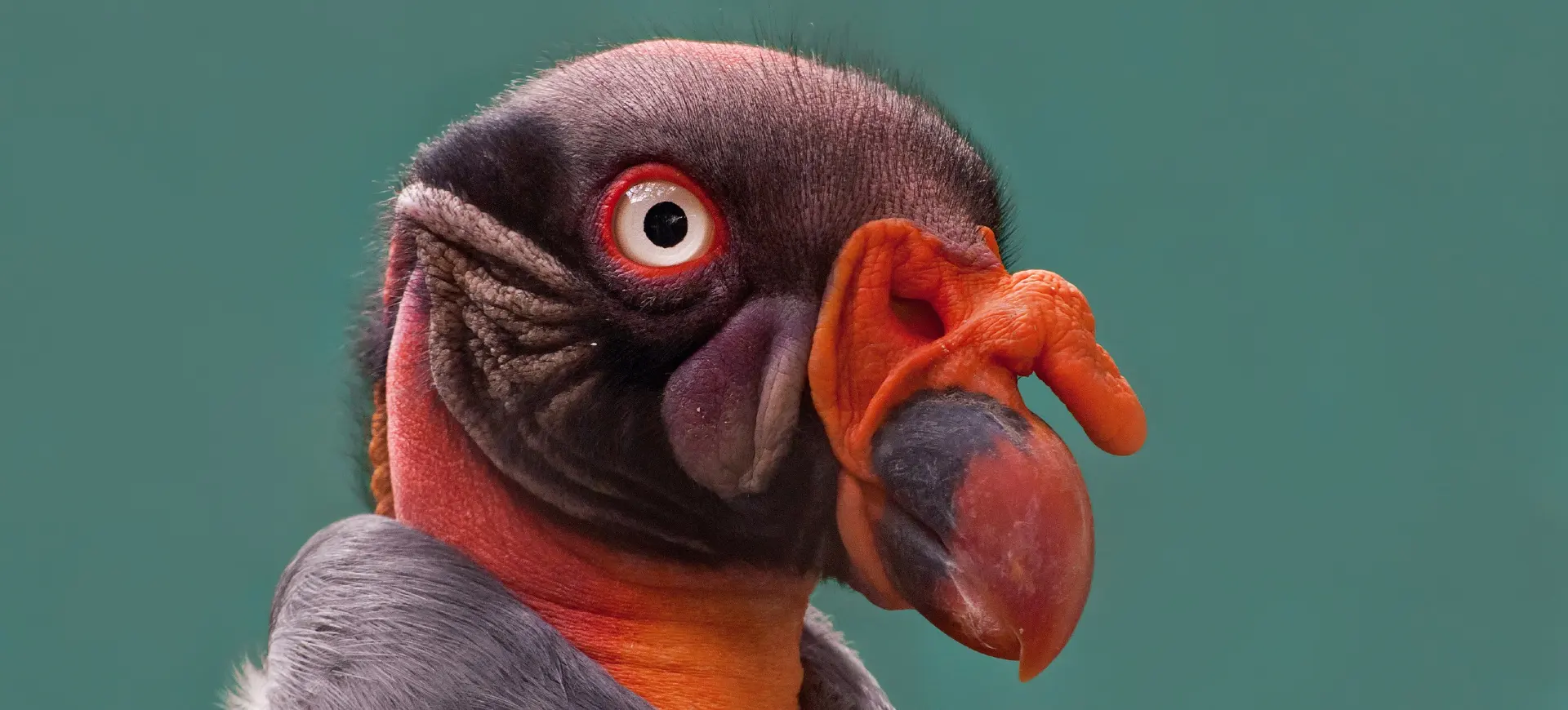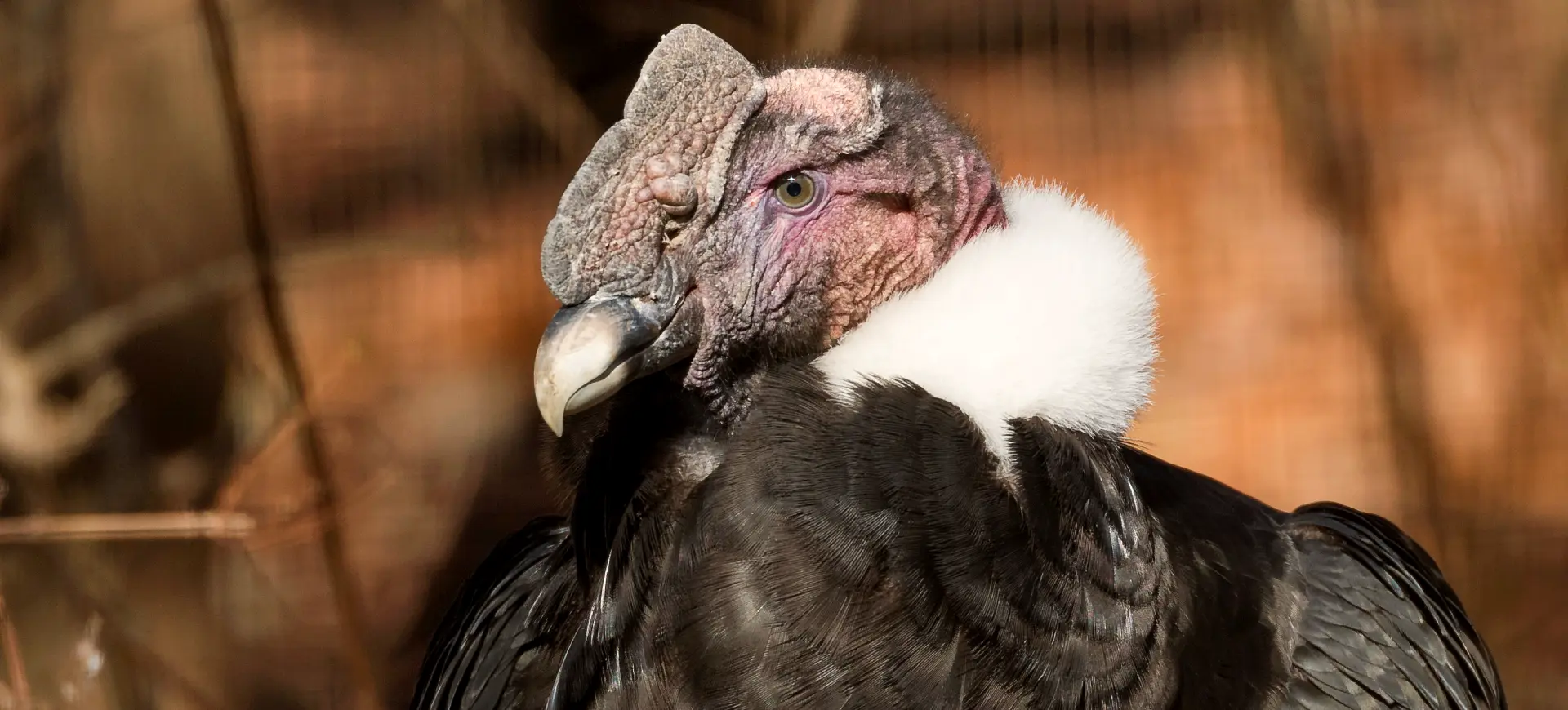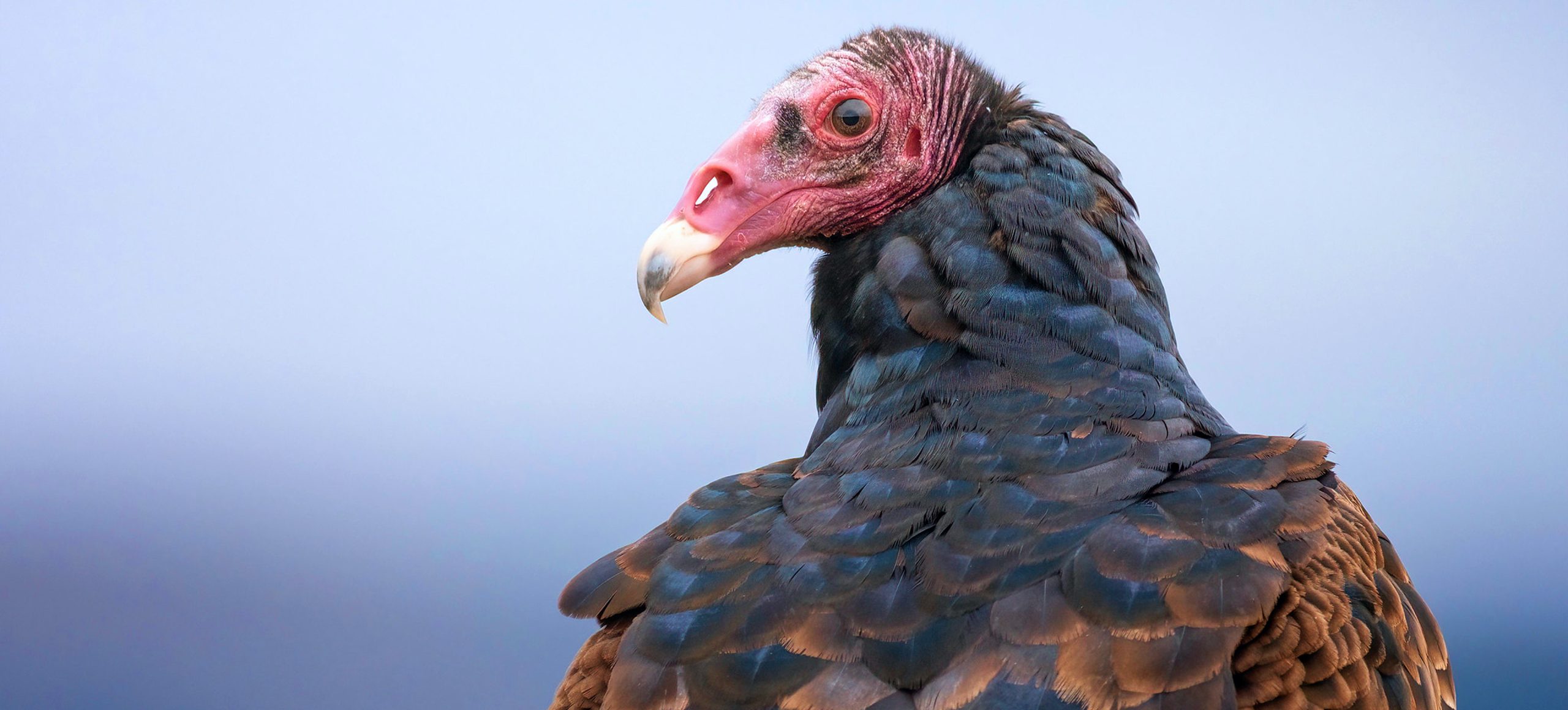Overview
The California condor (Gymnogyps californianus) is one of the largest flying birds in North America, known for its massive wingspan and bald, pinkish-orange head. This critically endangered vulture primarily inhabits rugged mountainous regions, coastal cliffs, and canyonlands in the western United States. It is a scavenger, feeding exclusively on carrion, and it plays a crucial role in the ecosystem by cleaning up carcasses and preventing the spread of disease. Once on the brink of extinction, intensive conservation efforts have helped stabilize and slowly increase its population.
California condors are highly social birds, often congregating at feeding and roosting sites. They communicate through body language and vocalizations such as hisses and grunts, particularly during interactions over food or mating. They are long-lived and slow to reproduce, with pairs forming strong, long-term bonds and raising only one chick every two years. Their dependence on large open spaces and low reproductive rates make them particularly vulnerable to environmental threats.
This species nearly vanished in the 20th century due to habitat loss, poaching, lead poisoning from bullet fragments, and pesticide contamination. In 1987, the last remaining wild condors were captured for a breeding program, leading to their successful reintroduction into the wild. Today, wild populations exist in California, Arizona, Utah, and Baja California, Mexico, though they remain heavily managed. Continued conservation efforts, including lead ammunition bans and captive breeding, are crucial for the species’ survival.
Taxonomy
Kingdom
Phylum
Class
Order
Family
Genus
Species
Type
Current distribution:
Wild populations of California condors are now found in select reintroduction sites in California, Arizona, Utah, and Baja California, Mexico. Key locations include the coastal mountains of Big Sur, Pinnacles National Park, the Grand Canyon, Zion National Park, and the Sierra de San Pedro Mártir in Mexico. While they historically ranged across much of western North America, their distribution today is limited to carefully managed habitats. Some individuals have been observed expanding their range, but their populations remain dependent on human intervention.
The species was extinct in the wild by 1987, when the last remaining condors were brought into captivity for a breeding program. Since reintroduction efforts began in the 1990s, populations have steadily increased, though they remain critically endangered. Lead poisoning from ingesting bullet fragments remains the primary threat to their survival. Ongoing conservation programs, including lead ammunition bans and intensive monitoring, are crucial for sustaining and expanding their wild populations.
Physical Description:
The California condor is a massive vulture with a wingspan of nearly 10 feet (3 meters), making it one of the largest flying land birds in the world. Its body is covered in black feathers, with distinctive white patches visible on the underside of its wings during flight. The head and neck are bare of feathers, exposing wrinkled pink, orange, or reddish skin that darkens with age and can change color based on mood or social interactions. It has a strong, hooked beak adapted for tearing flesh and powerful feet that are more suited for walking than grasping.
Juveniles have darker, grayish-black skin on their heads, which gradually turns pinkish-orange as they mature. Their long, broad wings allow for efficient soaring, enabling them to cover great distances while searching for carrion. They have relatively weak feet compared to other birds of prey, as they do not kill their food but rather scavenge carcasses. Their keen eyesight helps them locate food from high altitudes by following other scavengers to carcass sites.

Lifespan: Wild: ~60 Years || Captivity: ~70 Years

Weight: Male & Female: 17–24 lbs (7.7–10.9 kg)

Length: Male: 43–55 in (109–140 cm) || Female: 39–51 in (99–130 cm)

Wingspan: Male & Female: 96–114 in (244–290 cm)

Top Speed: 55 mph (88 km/h)
Characteristic:
Native Habitat:
California condors inhabit mountainous regions, coastal cliffs, and canyonlands where they can easily access thermals for soaring flight. They prefer areas with open landscapes, including grasslands, scrublands, and forests, as long as an adequate food supply exists. Nesting sites are typically located in caves, rock crevices, or large trees in remote locations, providing protection for their eggs and chicks. Their habitat choices are influenced by the availability of carrion, roosting sites, and minimal human disturbance.
They historically ranged from the Pacific Northwest to Baja California and into the southwestern United States. Today, they are found in specific reintroduction sites, including the coastal mountains of California, Arizona’s Grand Canyon region, and parts of Utah and Baja California, Mexico. Conservation programs manage and monitor these populations to ensure their survival. Although they can adapt to various environments, habitat loss and food contamination remain major challenges.
Climate Zones:
Biomes:
Biogeographical Realms:
Continents:
Countries:
Diet:
Diet & Feeding Habits:
California condors are obligate scavengers, meaning they feed exclusively on carrion, including the remains of large mammals such as deer, cattle, sea lions, and even whales. They rely on their keen eyesight to locate food from high altitudes, often watching for other scavengers like turkey vultures or coyotes to lead them to carcasses. Once at a feeding site, they use their strong, hooked beaks to tear apart tough hides and muscle. Unlike some vultures, they do not have a strong sense of smell and depend solely on vision for locating food.
They often feed in groups, where a strict hierarchy determines feeding order, with dominant individuals eating first. Their featherless heads help them stay clean while feeding, reducing the risk of bacterial infection. They can go several days without eating but will gorge themselves when food is available, sometimes consuming up to three pounds (1.4 kg) of meat in a single meal. Because they do not hunt, they rely on natural deaths, roadkill, or carcasses left by other predators to survive.
Mating Behavior:
Mating Description:
California condors are monogamous and form long-term pair bonds, often remaining together for life. Courtship involves ritualized displays, including wing-spreading, head-bobbing, and vocalizations to reinforce the pair’s bond. They typically nest in rock crevices, caves, or large trees, where the female lays a single egg every two years. Both parents share incubation duties, which last about 56 days.
Once the chick hatches, it remains dependent on the parents for up to a year, slowing condor reproduction. Parents take turns feeding the chick by regurgitating partially digested food. Juveniles fledge at around six months but continue to rely on parental guidance for several more months. Due to their low reproductive rate, every surviving chick is critical to the species’ recovery.
Reproduction Season:
Birth Type:
Pregnancy Duration:
Female Name:
Male Name:
Baby Name:
Social Structure Description:
California condors are highly social birds. They gather in groups at roosting and feeding sites, where they interact through body language and vocalizations. They have a strict dominance hierarchy, with older and more experienced individuals securing access to food first. Social bonds are reinforced through mutual preening and cooperative nesting behaviors. Although they are not territorial, they return to the same nesting sites year after year.
Juveniles learn essential survival skills by observing older condors, often following them to feeding areas and mimicking their behaviors. Mated pairs form strong, long-term bonds and work together to raise their single chick. Condors communicate using hisses, grunts, and wing displays, particularly during feeding disputes or courtship. Their reliance on social learning makes conservation efforts crucial, as older, experienced birds help teach young condors survival skills.
Groups:
Conservation Status:
Population Trend:
The California condor population suffered a catastrophic decline during the 20th century, reaching a low of just 27 individuals in 1987. At that point, all remaining wild condors were captured for a last-resort captive breeding program. Thanks to conservation efforts, the population has grown steadily, with over 500 individuals now living in the wild and in captivity. Despite this progress, the species remains critically endangered and dependent on intensive management for survival.
Reintroduced populations in California, Arizona, Utah, and Mexico have established breeding pairs, with some individuals reproducing without human intervention. However, threats such as lead poisoning, habitat destruction, and power line collisions continue to impact population growth. Conservationists closely monitor wild condors, tracking their movements and health while providing supplementary feeding to reduce exposure to contaminated food sources. While their numbers are increasing, the species is still far from self-sustaining.
Population Threats:
Lead poisoning is the leading cause of death for California condors, as they often ingest bullet fragments from carcasses left by hunters. Despite efforts to ban lead ammunition in condor habitats, illegal lead-based hunting continues to pose a significant risk. Habitat loss from urban development, agriculture, and deforestation further reduces their available nesting and foraging areas. Power line collisions and electrocution are major hazards, particularly for juvenile birds still learning to navigate their environment.
Other threats include plastic ingestion, illegal poaching, and disturbance from human activity near nesting sites. Since condors scavenge widely, they sometimes consume human garbage, which can lead to fatal blockages in their digestive system. Climate change may also impact their food sources and habitat suitability, altering their historical range. Without continued conservation intervention, these threats could reverse the population gains made over the past decades.
Conservation Efforts:
The California condor recovery program is one of history’s most intensive and successful conservation initiatives. Captive breeding programs, led by institutions such as the San Diego Zoo and the Peregrine Fund, have increased the population. Since the early 1990s, condors have been gradually reintroduced into the wild in protected areas where they are closely monitored. Biologists track wild individuals using GPS transmitters and conduct regular health checks to manage threats.
To combat lead poisoning, California, Arizona, and Utah have implemented bans on lead ammunition in condor habitats, though enforcement remains a challenge. Power line modifications and flight training programs help reduce electrocution risks for young condors. Public education campaigns have raised awareness about the species’ plight, encouraging conservation support and responsible hunting practices. Despite these efforts, continued funding and management will be necessary to ensure the species’ long-term survival.
Additional Resources:
Fun Facts
- The California condor has the largest wingspan of any North American bird, reaching up to 9.5 feet (2.9 meters).
- Unlike many vultures, it does not have a strong sense of smell and relies on keen eyesight to locate food.
- Its bald head helps keep it clean while feeding on carrion, reducing the risk of bacterial infections.
- Condors can soar for hours without flapping their wings, using rising air currents to stay aloft.
- They can live for over 60 years, making them one of the longest-lived bird species.
- When threatened, condors may regurgitate food to lighten their body weight and escape more quickly.
- Each California condor has a unique numbered wing tag for identification and monitoring.
- They are one of the few bird species that engage in social learning, with young birds observing older condors to develop survival skills.
- Their prehistoric ancestors once roamed across North America, with fossil evidence dating back over 10,000 years.
- The California condor was once sacred to many Native American tribes, symbolizing power, renewal, and the spirit world.

